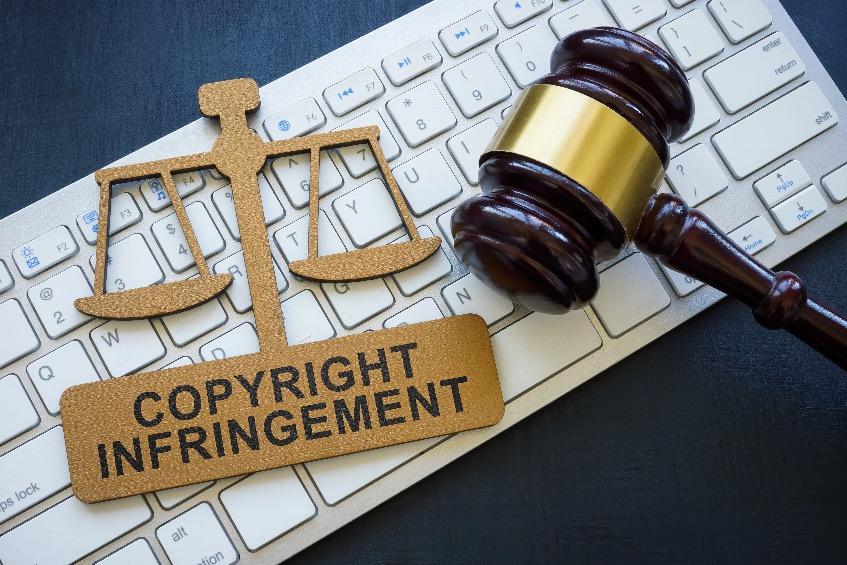
In the ever-evolving digital landscape, where trends shift at the speed of a swipe and influence blooms in 15-second snippets, YouTube has emerged as a powerful platform for marketing. With millions of creators wielding their cameras to connect with audiences, the allure of influencer marketing has captivated brands eager to tap into engaged communities. Though, beneath the glitzy exterior of viral videos and catchy catchphrases lies a complex web of legal considerations that can easily ensnare the unwary. “Navigating Law: The Legal Landscape of YouTube Influencer Marketing” delves into the intricacies of this unique marketplace, exploring the regulations and best practices that govern collaborations between influencers and brands. As we dissect the ethical and legal frameworks shaping this dynamic relationship, we aim to equip marketers, creators, and legal professionals with the knowledge needed to thrive in an environment where creativity meets compliance.Join us on this journey through the intersections of influence, art, and law, where understanding the rules of the game is as crucial as the content itself.
Understanding the Regulatory Framework for Influencer Marketing on YouTube
The legal landscape governing influencer marketing on YouTube is complex, shaped by various regulations aimed at protecting consumers and promoting transparency. Influencers must navigate the guidelines set forth by agencies such as the Federal Trade Commission (FTC) in the United States, which requires clear disclosures of paid partnerships.These disclosures help viewers understand when they are being marketed to, ensuring that authenticity is maintained in the influencer-audience relationship. The necessity for transparency is underscored by a growing body of legislation aimed at holding creators accountable for misleading advertising practices. Influencers should be familiar with the key requirements for compliance, including:
- Clear Disclosures: Use of hashtags like #ad or #sponsored.
- Content Appropriateness: Adhering to community standards and sensitivities.
- Disclosure Timing: Placing disclosures in a way that is easily visible to viewers.
Moreover, international markets present additional regulatory considerations. As a notable example, european Union regulations emphasize consumer protection, mandating that influencers adhere to strict guidelines regarding advertising and endorsing products. this often involves obtaining clear consent for the use of personal data in marketing strategies, reflecting a broader push towards privacy protection.As the influencer marketing sector continues to evolve, collaboration with legal experts can assist in navigating these multifaceted regulations. Here’s a quick overview of notable regulations across different regions:
| Region | Regulatory Body | Key Focus |
|---|---|---|
| United States | FTC | Ad Disclosure |
| European Union | EFSA | Consumer Protection |
| United Kingdom | CMA | Transparency |

Mastering Disclosure Requirements: Best practices for Compliance
Understanding and fulfilling disclosure requirements is crucial for influencers and brands alike to build trust and maintain credibility with their audience. Proper transparency ensures compliance with regulations, but it also enhances the authenticity of promotional content. Key strategies for effective disclosure include:
- Clear Language: Use straightforward terms like “ad” or “sponsored” to denote promotional content.
- Placement: Position disclosures at the beginning of the video or in the initial part of the description to ensure visibility.
- Platform-Specific Guidelines: Familiarize yourself with the rules set forth by both YouTube and the FTC to avoid missteps that could jeopardize campaigns.
Additionally, consistent monitoring and updating are essential to adapt to any changes in laws or platform policies.Consider implementing an internal review checklist before publishing content, ensuring that all disclosures are properly made.Below is a sample checklist that can be customized:
| Checklist Item | Status |
|---|---|
| Disclosures placed at the beginning | ✔️ |
| Type of sponsorship clearly stated | ✔️ |
| Review of current FTC guidelines | ✔️ |

Addressing Copyright Issues: Protecting Original Content in Influencer Campaigns
In the rapidly evolving realm of influencer marketing, safeguarding original content is paramount. Creators invest time, energy, and creativity into their work, and protecting that intellectual property is essential to ensure they recieve the recognition and compensation they deserve. When collaborating with influencers, brands must establish clear agreements that outline the ownership of content produced during campaigns. Without such guidelines, issues can arise regarding who holds the rights to images, videos, and captions, which can lead to disputes and potential legal action.
To streamline the protection of original content,brands and influencers can adopt a proactive approach by considering the following strategies:
- Draft Clear Contracts: Specify ownership rights,usage limits,and compensation details.
- Cite Sources: Properly credit any third-party content to avoid copyright infringements.
- Utilize licensing Agreements: Secure permissions for the use of shared materials, establishing a clear path for re-use.
- Monitor Use: Regularly check how and where your content is being utilized to address unauthorized use swiftly.
In situations where disputes arise, having a well-documented agreement can serve as a powerful asset in any legal discussions. Below is a simple table depicting some common copyright concerns that can be encountered in influencer campaigns:
| Concern | Potential Solution |
|---|---|
| Unauthorized Use of Content | Implement usage rights clauses in contracts. |
| Misattribution of Work | Ensure proper credit is included in all formats. |
| Content Repurposing | Define limits in the licensing agreement. |

Building a Sustainable brand Partnership: Legal Considerations for Collaborations
When engaging in collaborations, it is indeed crucial for brands and influencers to establish clear agreements outlining the terms of partnership. These agreements should specify the scope of work, deliverables, and timelines, ensuring that both parties have clear expectations. Additionally, consider incorporating clauses that address factors such as intellectual property rights, confidentiality, and the use of each party’s materials. Here are some key elements to include in your agreements:
- Scope of Work: A detailed description of the project.
- Compensation: Clear terms regarding payment structure.
- Content Ownership: Define who owns the rights to created content.
- Disclosure Requirements: Ensure compliance with FTC guidelines for sponsored content.
Furthermore, it’s crucial to conduct due diligence on potential partners. This includes verifying their audience demographics, reviewing their previous work, and assessing their brand values to ensure alignment. A partnership misaligned in ethos could not only confuse audiences but may also lead to reputational risks. Create a checklist that includes the following considerations:
- Reputation: Investigate their public persona and past collaborations.
- Engagement Rates: Analyze audience interaction with their content.
- Brand Alignment: Ensure shared values and target demographics.
In Summary
As we traverse the dynamic terrain of influencer marketing on platforms like YouTube, it becomes evident that the intersection of creativity and legality presents both a challenge and an prospect. Navigating this intricate legal landscape requires not only an understanding of the regulations at play but also a commitment to ethical practices that foster trust and transparency with audiences.
The laws governing influencer marketing are in constant flux,evolving alongside the platforms and the influencers who inhabit them.As brands and creators continue to push the boundaries of engagement and creativity, staying informed and compliant is not just a legal obligation, but a strategic imperative. By embracing these regulations as guideposts rather than obstacles, influencers can elevate their authenticity and, in turn, their impact.
In this ever-evolving field, knowledge is power. Equip yourself with the necessary insights and resources to not only survive but thrive in the YouTube influencer ecosystem. As we conclude our exploration of this complex subject, may you feel empowered to make informed decisions that harmonize creativity with compliance, building a marketing strategy that resonates with your audience and upholds the integrity of your brand. In the world of influencer marketing, the journey is as critically important as the destination—so navigate it wisely.